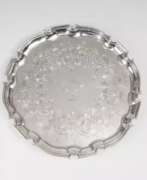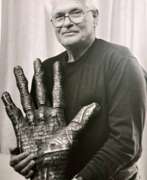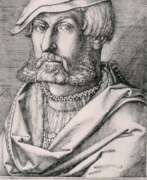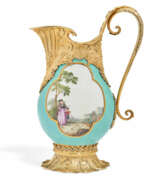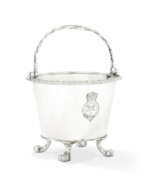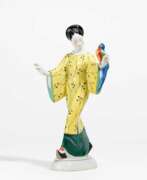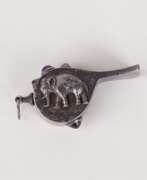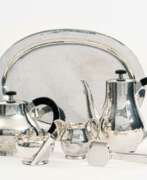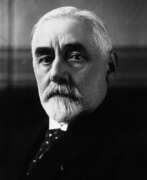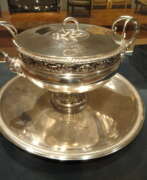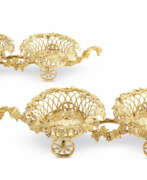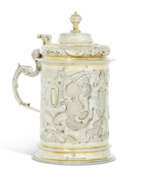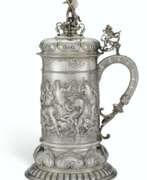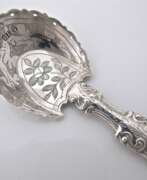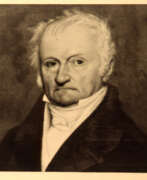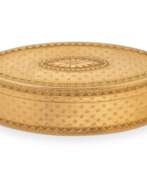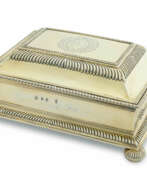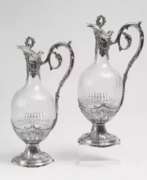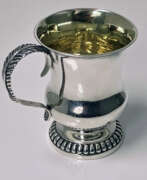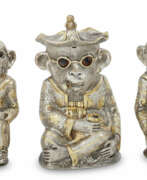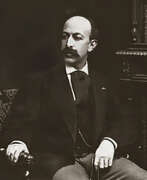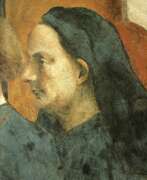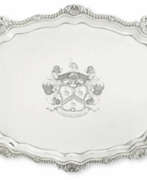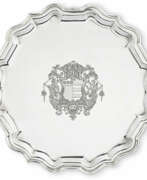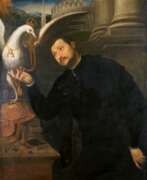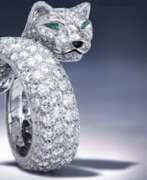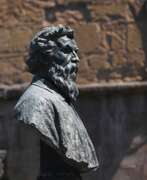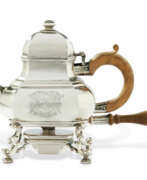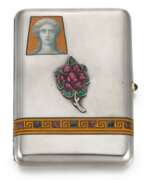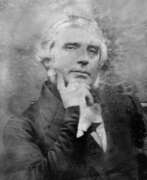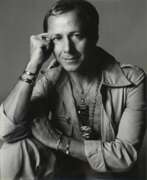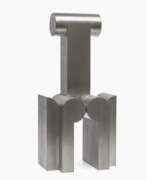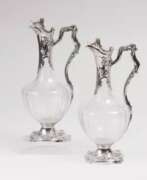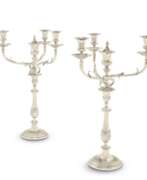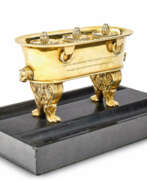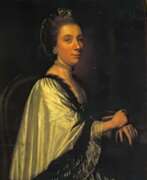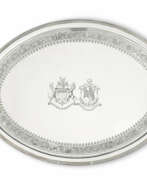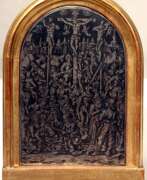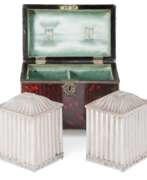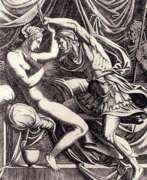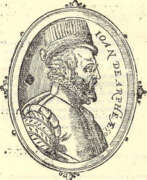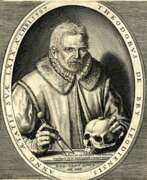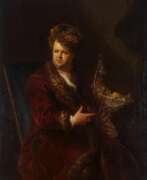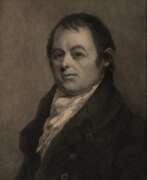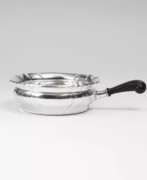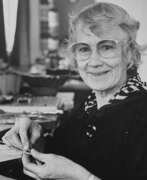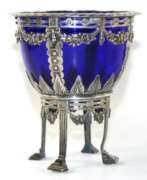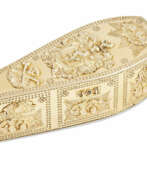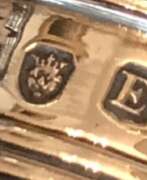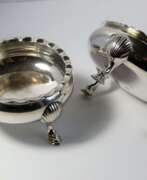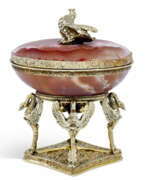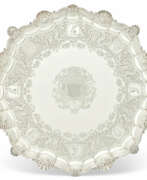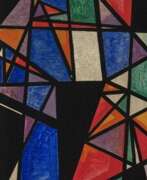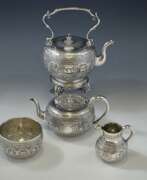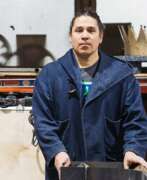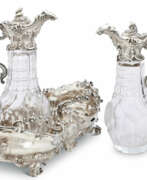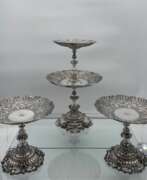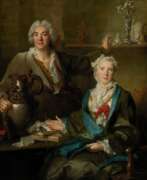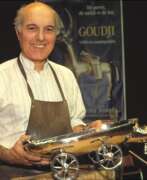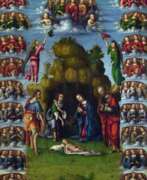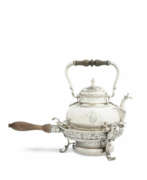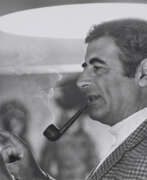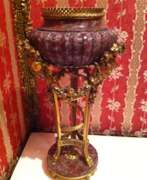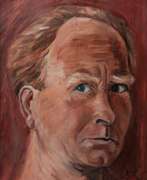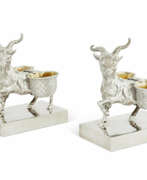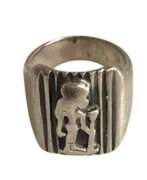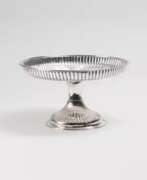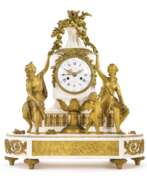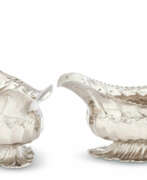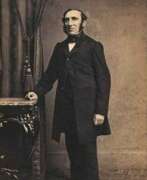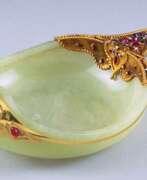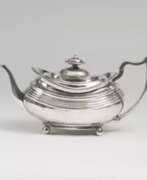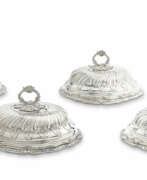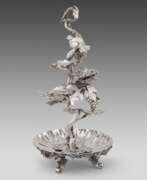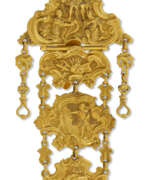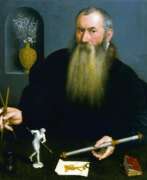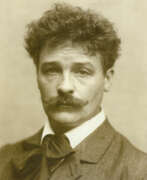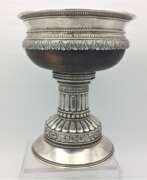Jewelers
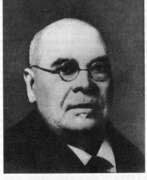

Johan Victor Aarne, born Lindström in Sweden, was a Finnish jeweller who collaborated with the Fabergé firm and was a supplier to the Imperial Court.
Aarne was educated in the art of jewellery by the renowned jeweller Johan Erik Hellsten. He worked in the workshop of August Holmström, included in the Fabergé firm, before opening his own workshop. In 1891 he moved to St. Petersburg, where he worked directly for Fabergé. In 1904, he sold the workshop and moved to Vyborg, continuing to work successfully in the jewellery business.
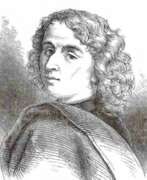

Mariotto Albertinelli, an Italian painter born in 1474, was a prominent figure in the High Renaissance, celebrated for his contribution to the Florentine school of painting. Albertinelli's work is distinguished by its adherence to the principles of the Renaissance, characterized by a profound appreciation for classical beauty, balanced compositions, and a deep engagement with religious themes.
Known for his collaboration with Fra Bartolommeo, Albertinelli's artistry was marked by a harmonious blend of spirituality and naturalism. His paintings are revered for their delicate handling of religious subjects, brought to life with vivid realism and emotional depth. This unique approach made him a pivotal figure in the evolution of Renaissance art, bridging the gap between the divine and the human.
Among his renowned works, the "Visitation of the Virgin Mary" stands out as a masterpiece, showcasing his skillful use of color and perspective to enhance the narrative. Albertinelli's contributions can be found in several prestigious museums and collections around the world, offering a testament to his enduring legacy.
For collectors and connoisseurs of art and antiques, Mariotto Albertinelli represents the quintessence of Renaissance artistry. His works not only capture the aesthetic ideals of his time but also reflect the cultural and spiritual aspirations of the era.
To delve deeper into the life and art of Mariotto Albertinelli and stay informed about upcoming exhibitions, sales, and auctions featuring his work, signing up for updates is essential. This subscription ensures that enthusiasts and collectors alike remain connected to the vibrant legacy of this Renaissance master, offering exclusive insights and opportunities to enhance their appreciation and collection.
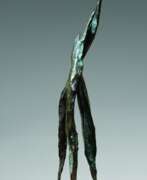

Helen Ashbee is a British artist, sculptor and jeweller. Daughter of renowned architect, designer and social reformer Charles Robert Ashbee.
Helen Ashbee was a textile designer and after the death of her husband, Italian painter Francesco Cristofanetti, she finds her real business in Paris - 'abstract sculpture' and related jewellery, for which she always did many preparatory drawings.
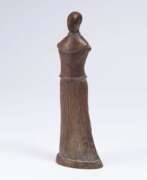

Edgar Augustin was a German painter and sculptor.
Augustin studied sculpture in Münster with Karl Ehlers, then was a pupil of the master Gustav Zeitz in Hamburg. His oeuvre includes partly abstract figurative representations in bronze, wood and plaster as well as paintings, drawings and graphics. Some of Edgar Augustine's sculptures are located in public spaces in Hamburg and other cities.
Edgar Augustin was a member of the Free Academy of Arts in Hamburg and the Special Association of Artists in Germany. In the second half of the 20th century, Augustin was one of the pioneers of figurative wood sculpture and is considered its most important representative.
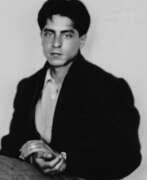

Mirko Basaldella is an Italian and American sculptor and artist.
Born into a creative family, he displayed his talent from a young age and participated in the Italian Biennale. In 1957 Basaldella moved to Cambridge, Massachusetts, and was elected a Fellow of the American Academy of Arts and Sciences in 1962.
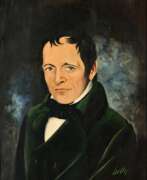

Christopher Bechtler is a German-born American jeweller and watchmaker.
Christopher Bechtler became famous and rich during the American gold rush due to his business idea of melting mining and panning gold into standardized dollar coins with precisely defined metal content. In doing so, he introduced dollar coins based on the gold standard, which were only accepted and minted by the US government after a long time.
Christopher Bechtler minted over a million gold coins between 1831 and 1841, which today are highly sought after by collectors and are worth several thousand dollars per piece.
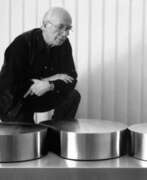

Friedrich Becker was a German artist, jeweler, and inventor of kinetic jewelry.
Friedrich Becker is one of the most influential jewelers of the second half of the twentieth century. He became known primarily for his avant-garde projects of kinetic jewelry and large kinetic objects.
Becker was interested in kinetics, the interaction of force and motion already during his apprenticeship years. He first trained as a mechanical engineer, then joined the aviation department. Only after World War II did he "make the reckless decision to become a jeweler." After training as a jeweler, he studied at the Werkkunstschule and then founded his own workshop in Düsseldorf, becoming a professor at the Düsseldorf University of Applied Sciences.
Becker experimented and supplemented various jewelry pieces with interchangeable stones and eventually developed kinetic jewelry. He was not only the inventor of kinetic jewelry, but also revolutionized the jewelry market with the introduction of stainless steel and synthetic gemstones. Each kinetic piece by Friedrich Becker is a perfect symbiosis of form, color and material.


Suzanne Belperron was an influential 20th-century jewellery designer based in Paris. She worked for the Boivin and Herz jewellery houses before the outbreak of World War II. Subsequently, she took over the Herz company, renaming it Herz-Belperron. Belperron had many important client, from royalty, arts and show business on both sides of the Atlantic.


Gerald Adrian Sallis Benney was a British silver and goldsmith who along with David Mellor and Robert Welch popularised stainless steel designs in post-war British homes. Like Mellor and Welch he was influenced by modern Scandinavian design and in particular Georg Jensen.
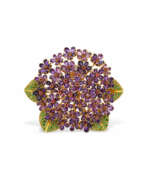

Jules René Boivin was a French jeweller, born in Paris in 1864. He began his career as a jeweller as an apprentice to his brother Victor, and soon excelled in creating small boxes and inlaid metalwork. His talent was not limited to craftsmanship - he had a unique sense of design and excelled at drawing on both paper and metal.
In 1890, Boivin decided to set up his own business and acquired several workshops. He became in demand with jewellery houses but also worked with private clients, creating unusual jewellery inspired by nature, from real animals to mythological creatures. In 1900 he moved to new premises and began trading in antique jewellery. Sadly, his life was cut short at the front in 1917 when he was just 53 years old.
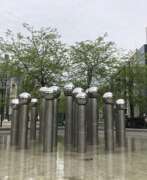

Pol Bury was a Belgian sculptor and artist, celebrated for integrating movement into his sculptures and pioneering the kinetic art movement. Born on April 26, 1922, Bury began as a painter in the Jeune Peintre Belge and the COBRA groups, later transitioning to sculpture. His most renowned work, the fountain-sculpture 'L'Octagon', is a highlight in San Francisco. His innovative art was acknowledged when his work was auctioned at Christie's in 2008, recognizing the unique nature of his contributions to art.
Pol Bury's creations can be found in permanent collections, like that of the Chelsea Art Museum, amongst others.
.
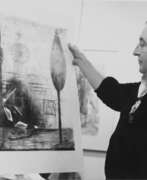

René Carcan was a Belgian painter, engraver, sculptor and jeweler.
He studied sculpture at the Academy of Saint-Josse-Ten-Nod and then painting at the Brussels Academy.
Carcan developed an artistic style that has been compared to Henri Matisse, and the frescoes of Tuscany and Etruria became one of his main sources of inspiration. Carcan was a prolific and polymorphous artist, always eager to experiment. In addition to his work in printmaking, he enjoyed sculpture and jewelry making.
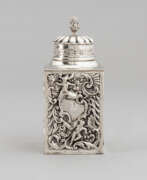

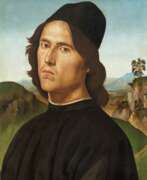

Lorenzo di Credi was an Italian Renaissance painter and sculptor best known for his paintings of religious subjects. He is most famous for having worked in the studio of Andrea del Verrocchio at the same time as the young Leonardo da Vinci.
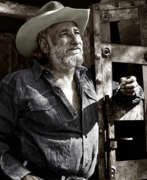

Ettore (Ted) DeGrazia was an American Impressionist painter, sculptor, composer, actor, director, designer, architect, jeweller and lithographer.
DeGrazia is known for his colourful depictions of Native American children in the American Southwest and other western scenes. He has been called "the most replicated artist in the world."


Andrea del Verrocchio, a prominent figure of the Italian Renaissance, was a master of multiple disciplines including sculpture, painting, and goldsmithing. Born in Florence around 1435, Verrocchio was a versatile artist whose influence extended far beyond his own creations, most notably as the mentor to Leonardo da Vinci. His works span a range of media, showcasing his expertise in both the sculptural and painterly aspects of Renaissance art.
Verrocchio's studio was a fertile ground for the incubation of Renaissance artistic talent. Among his most celebrated works is the bronze statue of David, commissioned by the Medici, which displays a youthful victor standing over Goliath, emblematic of Florence's civic pride and cultural ambition. This piece, alongside his equestrian statue of Bartolomeo Colleoni in Venice, exemplifies Verrocchio's skill in capturing dynamic figures and his innovative approach to bronze casting.
In painting, Verrocchio's contributions, though fewer in number, are significant for their exploration of depth and perspective, hallmarks of Renaissance artistry. His Baptism of Christ, for example, is notable not only for its own merits but also for Leonardo da Vinci's participation, which, according to legend, led Verrocchio to never paint again, outshone by his pupil's talent. However, this story is often considered apocryphal.
Verrocchio's legacy is cemented by the breadth of his work and the generations of artists he influenced. His adeptness across multiple forms—sculpture, painting, and goldsmithing—places him among the Renaissance's most versatile and influential figures. His sculptures and paintings remain pivotal in understanding the evolution of Renaissance art, characterized by a deep understanding of human anatomy, a mastery over materials, and an innovative approach to traditional themes.
For collectors and experts in art and antiques, Verrocchio's works offer a fascinating insight into the mastery and creativity of the Renaissance period. His influence on subsequent generations of artists underscores the enduring value and appeal of his creations.
For those interested in staying informed about upcoming sales and auction events featuring works by Andrea del Verrocchio, signing up for updates can provide exclusive access to the latest offerings in this realm. This ensures that enthusiasts and collectors alike remain connected to the vibrant market for Renaissance art, celebrating the legacy of one of its most distinguished masters.
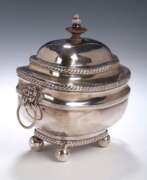

Francois Dormieux was a French engraver and jeweler who lived and worked in Calcutta, India, in the late 18th and first half of the 19th centuries.
Francois Dormieux's own published book Hindoostany Characters (Hindoostany Characters, 1805), now in the British Library, is well known. It consists of forty very high quality engravings made from artists' drawings. They depict the people of India in their daily lives, their culture and traditions.
As a jeweler, Francois Dormieux worked in partnership with Francis Vrignon in a company called Francis Dormieux & Co. that made jewelry and beautiful silverware in the colonial style.
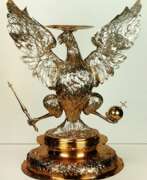

Abraham Drentwett II the Elder was a German painter, goldsmith and engraver.
This master was one of the great Augsburg dynasty of Drentwett artists, numerous members of which worked primarily as gold and silver jewelers for the ruling courts of Europe from the 16th to 18th centuries.
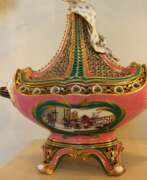

Jean-Claude Chambellan Duplessis was a goldsmith, sculptor and ceramics modeller, bronze-founder and decorative designer working in the Rococo manner. He served as artistic director of the Vincennes porcelain manufactory and its successor at Sèvres from 1748 to his death in 1774 and as royal goldsmith (orfèvre du Roi) from 1758 to 1774.


Patrick Dupré is a French op-art and kinetic artist.
While working for the aluminum company Pechiney in Paris in 1964, he created his first work "Skyscraper" on aluminum plate using rubber, ink, sharpener, blade and Shabu knife, and in the 1970s he already developed his own technique of etching on aluminum foil. During the same years, Dupre also invented a new method of industrial engraving on silver, gold and metal bowls. He created art prints by hand, engravings on copperplate, gravure prints and etchings on drypoint. Since 2012, Dupre has produced Op-Art jewelry based on his work and lives in the French countryside.
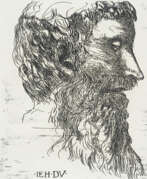

Jean Duvet was a French Renaissance goldsmith and engraver, now best known for his engravings. He was the first significant French printmaker. He produced about seventy-three known plates, that convey a highly personal style, often compared to that of William Blake, with very crowded compositions, a certain naive quality, and intense religious feeling. According to Henri Zerner, his work has a "freedom and immediacy that have no equivalent in Renaissance printmaking".
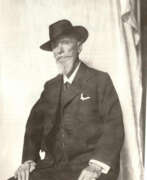

Carl Fabergé (Russian: Карл Гу́ставович Фаберже́) was a 19th- and 20th-century Russian jeweler, entrepreneur, and artist of German descent. He ran a family jewelry company for almost 50 years, which became world-famous for its products - Easter eggs made of precious metals, stones, and enamel.
Carl Fabergé met the Russian Emperor Alexander III at the All-Russian Exhibition in Moscow in 1882, which was a landmark event in the jeweler's career. The emperor ordered an Easter egg from the master for his wife, which the empress loved. From this moment on Fabergé, who became the jeweller to the Court, became responsible for the annual production of Easter eggs for the imperial court. Members of the imperial family also ordered jewelry from Fabergé for their many European relatives. This turned the Fabergé family company into one of the leaders of the world jewelry market.
Fabergé produced not only high-end jewelry products, but also items for the average buyer. In 2005, at Sotheby's in New York, several stone figurines were sold for $850,000 to $1,800,000.
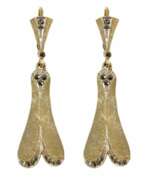

Theodor Fahrner stands out as a pioneering jewelry designer hailing from Pforzheim, Germany. Renowned for his exquisite Art Nouveau and Jugendstil creations, Fahrner's legacy extends beyond his lifetime. His pieces, known for their affordability, became synonymous with impeccable craftsmanship and unique design. Taking the reins of his father's ring factory after his passing in 1883, Fahrner swiftly rose to prominence. By 1895, he was the sole proprietor, venturing into innovative territories by registering patents and utility models during the upheaval leading up to the 20th century. Fahrner's breakthrough moment arrived at the 1900 Paris World Exposition, where his jewelry, designed by Max J. Gradl, earned a prestigious silver medal.
As the years progressed, Fahrner's design prowess flourished. From 1899 to 1906, he primarily undertook design work himself, infusing each piece with his artistic vision. Collaborations with designers such as Maria Obrich, Patriz Huber, and Ludwig Knupper later defined the firm's trajectory. The brand's focus shifted towards affordable yet elegant Art Deco jewelry, solidifying an international reputation. Fahrner's life journey concluded on July 22, 1919, leaving behind a rich heritage and two daughters, Vera and Yella. His legacy endured as jeweler Gustav Braendle acquired the Fahrner brand, passing it on under the name Bijouteriewarenfabrik Gustav Braendle, while the distinctive label "Fahrnerschmuck" continued to grace exquisite creations.
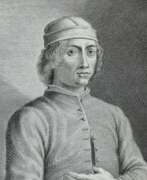

Francesco Francia, also known as Francesco Raibolini, was an Italian painter, goldsmith, and medallist from Bologna. He began his career in the late 15th century and collaborated with artists like Lorenzo Costa, drawing inspiration from the styles of Ercole de' Roberti, Perugino, and Raphael.
Francia ran a successful workshop and trained notable artists such as Marcantonio Raimondi and Ludovico Marmitta. While it was once rumored that Raphael's work caused him to die of depression, their friendship has since debunked this claim.
Francesco Francia passed away in Bologna, and his sons, Giacomo Francia and Giulio Francia, also became artists.


Robert Hennell was an English silversmith and engraver, best known for his work during the Georgian era. He was apprenticed to the silversmith John Scofield before setting up his own workshop in 1763.
Hennell's silver pieces were highly sought after for their quality and craftsmanship. He produced a wide range of objects, from tea services to candlesticks, and his designs were characterized by their elegant simplicity and attention to detail. He also created a number of commemorative objects, including the silver casket presented to Lord Nelson by the City of London in 1800.
In addition to his work as a silversmith, Hennell was also an accomplished engraver, and his work can be found on a number of coins and medals from the Georgian era. He was a member of the Royal Academy and exhibited his work at the Royal Academy exhibitions throughout his career.
Today, Hennell's silver pieces and engravings can be found in the collections of museums around the world, including the Victoria and Albert Museum in London and the Metropolitan Museum of Art in New York. His work continues to be admired for its beauty, quality, and historical significance.
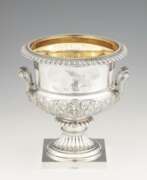

Johann George Hossauer was a German jewelry artist, entrepreneur and inventor.
Hossauer began working at the bronze factory of Werner & Mietke in Berlin and trained under the jeweler Henri de Ruolz. In 1819, King Friedrich Wilhelm III of Prussia financially supported the factory, which was managed by Hossauer. This factory produced articles of platinum, gold, silver, bronze, gilded and silvered copper and employed up to 100 people. At one of the first trade exhibitions in Berlin, the master received a gold medal for his work, and in 1826 the king granted him the title of jeweler of His Majesty the King.
As a prominent Berlin jeweler, Hossauer executed several orders of the Prussian court, including the Pour Le Merite and the Order of St. John, and also participated in the creation of the Russian Order of St. Vladimir and the Hanoverian House Order of St. George. He created silver table sets for Prussian princes and fulfilled other prestigious orders, produced jewelry, medals, and numerous pieces of gold and silverware.
In 1845, Hossauer sold his patent for the electroplating process to Werner von Siemens, and ten years later he was appointed a judge at the World's Fair in Paris.


Rei Kawakubo is a Japanese fashion designer based in Tokyo and Paris. She is the founder of Comme des Garçons and Dover Street Market. Although not formally trained as a fashion designer, Kawakubo did study fine arts and literature at Keio University. After graduation she worked in the advertising department at the textile company Asahi Kasei and she went on to work as a freelance stylist in 1967. Two years later, she began to design and make her own clothes under the label Comme des Garçons. In 1969, she established her own company, Comme des Garçons Co. Ltd in Tokyo and opened up her first boutique there in 1975. Starting out with women's clothes, Kawakubo added a men's line in 1978. Three years later, she started presenting her fashion lines in Paris. Comme des Garçons specialises in anti-fashion, austere, sometimes deconstructed garments. Kawakubo likes to have input in all the various aspects of her business, rather than just focusing on clothes and accessories. She is greatly involved in graphic design, advertising, and shop interiors believing that all these things are a part of one vision and are inextricably linked.
